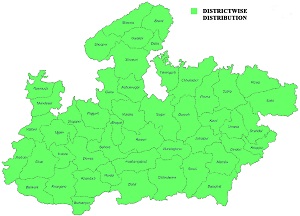| Coelognathus helena (Daudin, 1803) |
| Common Trinket Snake |
 |
|
Diagnostic characters:
|
| Head narrow, elongate and well defined; neck slightly distinct; pupil round; snout small and rounded; dorsal scales smooth; ventral scales with weakly developed keels; nostrils large. Dorsum brownish with reticulated pattern of dark brown or black markings containing white ocellii. The patterns are most conspicuous towards anterior side and gradually disappearing towards the posterior part of the body and transformed to two dark lateral stripes; behind the head there are two short narrow black lines on the lateral sides extending beyond the neck; belly pure white. SVL: 1500mm |
| Habit and Habitat: |
| Nocturnal and crepuscular; frequent near bushes in open fields, degraded forests; in summer, it is found in termite mounds, rock piles and crevices and in cooler months, it may be seen on leafy trees and bushes |
| Diet: |
| Feeds on rats, mice, squirrel, but also takes lizards and frogs |
| Legal Protection: |
| WL (P) A, 1972-Schedule IV |
| Conservation status and Threats: |
| Not accessed. Common. No serious threat observed. |
 |
Distribution: Madhya Pradesh: Throughout. Elsewhere in India: Throughout, up to Jammu and Kashmir (Poonch) in the north to Manipur and the Naga Hills in the Northeast. Elsewhere outside: Bangladesh, Nepal, Pakistan and Sri Lanka. |
|